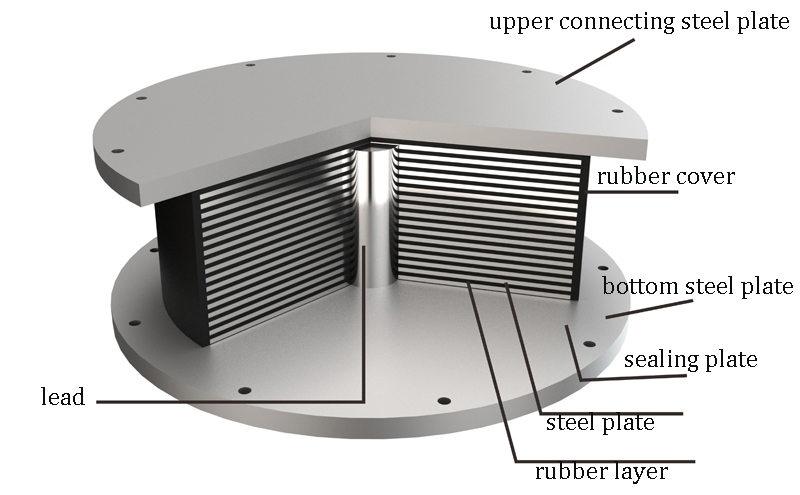A lead rubber bearing (LRB) is a seismic isolation device that is used to reduce the amount of seismic energy that is transmitted to a building or structure.
- Shear modulus: 0.8 MPa, 1.0 MPa, 1.2 MPa.
- Working temperature range: -25 °C to +60 °C.
- Lead core quantity: single or multiple.
- Shape: rectangular and round.
The lead rubber bearing consists of a laminated elastic bearing pad, upper and lower sealing connection plate, and a lead plug inserted into the middle of the bearing, as shown in the figure below:

Vertical load transfer process: crossbeam → top pre-buried steel plate → top connecting steel plate → top sealing steel plate → lead core structure laminated rubber bearing → bottom sealing steel plate → bottom connecting steel plate → bridge pier.
Horizontal load transfer process: pier → bottom footing bolt → bottom connecting steel plate → top sealing steel plate and shear tenon → top connecting steel plate → top pre-buried steel plate → anchorage member.
In an earthquake, unisolated buildings will vibrate back and forth in different directions due to inertial forces, resulting in building deformation and damage. The lead rubber bearing can separate the vibration of the top and bottom structure, expand the natural vibration period, and reduce the seismic force. The lead plug will slide together with the laminated rubber during an earthquake, but convert this movement energy into heat, thereby effectively reducing the inertial force of the building, thereby slowing down the vibration of the building. At the same time, the rubber part will maintain its original shape due to high elasticity.
After the earthquake, the lead rubber bearing helps the building return to its normal position through the dynamic recovery and recrystallization of the lead-core and the shear strain of the laminated rubber bearing.